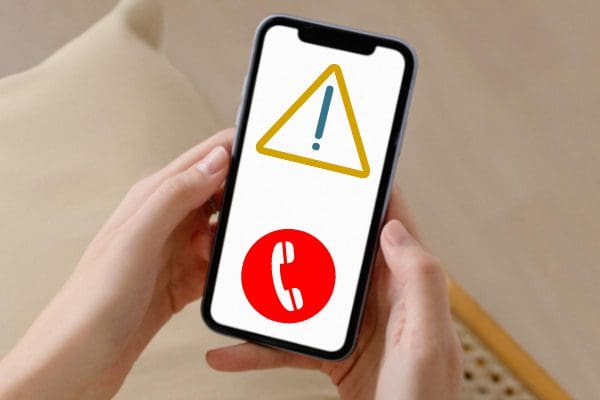You know the little tones that play when you press a key on a phone?
Have you ever wondered what theyre for?
Nowadays they dont really do anything.

One argument for them could be as an aid for the visually impaired.
Many phones, however, play the same tone for each key rather than a key-specific tone.
Originally though, they were designed to help route phone calls.
Obviously, this is a slow and inefficient method of making phone calls.
It also cant scale well at all and requires well-trained operators.
To improve the system basic automation was implemented.
This system signalled the number being dialled by adding pulsed resistance on the phone line.
The extra resistance would reduce the voltage on the line and could be decoded at the local exchange.
The system worked well but had a flaw, it didnt work for long-distance calls.
Instead, to get around this control tones were played on the trunk lines.
The signalling was in-band.
This meant that an unlucky caller could play the disconnect call tone by accident.
A savvy operator could do far more than that.
Contents
Tuning in
To make a long-distance call, a user would first press the 1 key.
This would then engage a secondary mode designed to handle long-distance calls.
The local exchange would identify the necessary remote exchange and connect to a trunk line to that exchange.
When a trunk line was not in use, both sides played a 2600Hz control tone.
The phone number would be encoded in a quick set of specific tones.
When one party hung up the handset, their exchange would play the 2600Hz control signal down the trunk.
The other exchange would hear this tone, and do the same, disconnecting the call.
One of the first people to discover this was Joe Engressia, known as Joybubbles.
This sparked his interest in the field and made him one of the earliest phreakers.
Tip: Phreak is a sensationalised spelling of freak using the ph from the word phone.
Phreaking culture is fairly closely related to early hacker culture.
Interestingly, disconnecting the call isnt the end of the story.
The 2600Hz tone was played automatically when a handset hung up.
Tone deaf
This may sound mostly useless but there are some other important details.
Secondly, some long-distance calls were free.
Specifically ones to 1-800 numbers.
Finally, for billing purposes, activity was tracked from the local exchange.
All this happened with the phone company only being able to see the call to the toll-free number.
This meant that the phreaker didnt get charged for the call.
Boxing it up
Most of this was initially discovered due to whistling.
All of it could be done through whistling.
It wasnt easy though.
The tones were precise frequencies and needed to be played in succession.
Phreakers with some electronics skills instead created a machine to do it for them.
this machine was called a blue box.
It was typically comprised of a set of keys to dial as well as to play the control tones.
At first, all of these blue boxes were hand-made by phreakers for their own use.
Generally, the phreaking community was small and grew slowly.
The phenomenon became significantly more widely known when Esquire magazine covered it in October 1971.
At this time, blue box kits became available.
Some enterprising individuals even started selling pre-made blue boxes.
They implemented a number of features including logging to identify unusual calls where the 2600Hz tone was played.
They would also implement wiretaps so you can gather evidence of what was happening.
This led to a number of lawsuits and convictions of phreakers.
With the small size of the phreaking community, the actual loss of income wasnt that great.
Instead, the real pressure to solve the issue came from the need to scale.
While more trunk lines were installed, other upgrades happened.
The multiplexing required that the control tones were filtered from the individual audio streams.
In many cases, this prevented the audio tones from being picked up.
The secondary cable used for signalling also took the actual process of configuring the call, out of band.
Conclusion
The blue box was a, now obsolete, tool made by phreakers.
It played the control tones used by the in-band long-distance calling system used in the US telephone connection.
It featured the ability to play a set of control tones as well as the tones related to dialling.
It relied on the in-band audio signalling used by the trunk system.
Their use eventually died out as that system was upgraded.